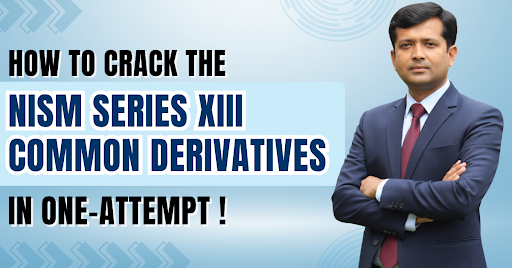As an educator and a professional who has been a part of the Indian financial landscape for over 25 years, I’ve had the privilege of mentoring thousands of ambitious young individuals. They are all driven by a common goal: to build a successful, rewarding, and, most importantly, a resilient career. In a market that is evolving at a breakneck pace, the question of resilience has never been more pertinent.
The traditional career path in finance was linear. You became an “equity guy,” a “forex guy,” or a “bond guy.” You built your career in a well-defined silo. Today, I am here to tell you that those silos are becoming obsolete. The financial professional of 2026 and beyond cannot afford to be a one-trick pony. They must be a “Triple Threat”.
This is the professional who is fluent in the language of equities, currencies, and interest rates. They are the versatile “Swiss Army Knife” that every top-tier financial institution is desperately seeking. They possess the holistic knowledge to see the entire market chessboard, not just a single square. This ability to connect the dots across asset classes is the single most powerful catalyst for fast-tracking a career from an entry-level role to a strategic, leadership position.
The most direct, credible, and regulator-approved path to becoming this triple threat professional is through a single, comprehensive qualification: the NISM Series XIII: Common Derivatives Certification Examination. In this guide, I want to deconstruct this powerful career strategy for you. We will explore why single-asset specialisation is a trap and how a multi-asset approach, honed by a quality NISM XIII Mock Test, is your key to a future-proof career.
Table of Contents
- The Specialist’s Trap: Why Single-Asset Expertise is a Career Risk in 2026
- Deconstructing the “Triple Threat”: Mastering Equity, Currency, and Interest Rate Derivatives
- The Career Mobility Advantage: How This Single Certification Unlocks Roles in Trading, Treasury, and Risk
- A Real-World Career Journey: How a Multi-Asset Professional Climbed the Ladder Faster
- Becoming the Triple Threat: The Role of a Comprehensive NISM Common Derivative Certification Mock Test
1. The Specialist’s Trap: Why Single-Asset Expertise is a Career Risk in 2026
In today’s deeply interconnected global economy, no market moves in isolation. A decision made by the US Federal Reserve sends ripples through the currency markets, which in turn impacts the profitability of Indian IT and manufacturing sectors, and can even influence the RBI’s next interest rate decision.
A professional with siloed knowledge sees only one part of this chain reaction. An equity derivatives specialist might see the Nifty fall but miss the root cause originating in the bond market. This is a significant career risk for two main reasons:
- Limited Strategic Value: At senior levels, employers are not looking for executors; they are looking for strategists. A strategist’s job is to see the big picture and connect the dots. A single-asset specialist, by definition, has a limited view.
- Vulnerability to Disruption: As technology and automation advance, the roles most at risk are the highly specialised, execution-focused ones. Versatility is the best form of career insurance.
A good NISM 13 Model Test will often include questions that force you to think across these asset classes, preparing you for the integrated nature of the modern market.
2. Deconstructing the “Triple Threat”: Mastering Equity, Currency, and Interest Rate Derivatives
The NISM XIII certification is designed to be a 3-in-1 qualification, equipping you with the foundational knowledge of the three most critical derivative markets.
H3: Mastering Equity Derivatives
This is the most visible segment. The certification provides a deep, technical understanding of stock and index Futures and Options (F&O). This is your key to understanding trading strategies, hedging, and the drivers of the stock market.
H3: Mastering Currency Derivatives
This skill makes you invaluable to any business with global dealings. You learn how to use currency futures and options to protect a company’s profits from the volatility of exchange rates. This is a core risk management function.
H3: Mastering Interest Rate Derivatives
This is an elite skill set. You learn about Government Bond futures and other instruments used to manage the risk of changing interest rates. This knowledge is essential for roles in banking, treasury, and debt fund management.
A comprehensive preparation plan, including quality NISM XIII Mock Test Papers, is essential to master these three distinct yet interconnected domains.
3. The Career Mobility Advantage: How This Single Certification Unlocks Roles in Trading, Treasury, and Risk
The most powerful aspect of the NISM XIII certification is the career mobility it provides. By clearing this single exam, you are not just qualifying for one job; you are making yourself a strong candidate for a wide range of prestigious roles across the industry.
- Career Door #1: The Trading Desks: Your multi-asset knowledge makes you a candidate for not just the equity F&O desk, but also the forex and fixed-income desks of broking firms and banks.
- Career Door #2: The Corporate Treasury: You become an ideal candidate for a role in the treasury department of a large corporation, where your primary job would be to manage the company’s currency, interest rate, and commodity risks.
- Career Door #3: The Risk Management Department: Financial institutions need professionals who can monitor and manage risk from a holistic perspective. Your 3-in-1 knowledge makes you a perfect fit for a market risk management role.
This versatility is a powerful career catalyst. It is wise to get a feel for the breadth of topics by trying a NISM 13 Demo Test early in your preparation.
4. A Real-World Career Journey: How a Multi-Asset Professional Climbed the Ladder Faster
Let’s make this tangible with the story of one of my former students, Sneha.
The Beginning:
Sneha was a bright MBA (Finance) graduate. While her peers were choosing a single specialisation, she took my advice and dedicated three months to preparing for the NISM XIII exam, using a series of NISM 13 Practice Test papers to build her competence across all three modules.
The First Job:
Her multi-asset certification made her CV stand out. She was hired by a leading private sector bank into their prestigious Treasury Markets Group as a management trainee, with a planned rotation across different desks.
The Defining Moment:
About a year into her job, a major geopolitical event caused a sudden spike in global crude oil prices. In the daily morning meeting, the Head of Treasury asked his team for a quick analysis of the potential impact.
- The Specialist’s View: The equity desk analyst spoke about the negative impact on airline and paint company stocks. The forex desk analyst spoke about the pressure on the Rupee due to a higher import bill.
- Sneha’s “Triple Threat” Analysis: Sneha, having been trained to think in an integrated way, provided a more holistic view. She said, “The primary impact is, of course, a higher import bill, which will put pressure on the Rupee (Currency Impact). This imported inflation will also put pressure on the RBI to delay any potential rate cuts, which will be a negative for our short-term bond portfolio (Interest Rate Impact). In the equity market, while it’s negative for oil-users, the weakening Rupee could provide a small, temporary cushion for the export-oriented IT sector stocks (Equity Impact).”
The Fast-Track:
The Head of Treasury was incredibly impressed. Sneha was not just reporting data; she was connecting the dots across asset classes. She was thinking like a strategist. This single event marked her out for a leadership role. Over the next few years, she was given more responsibility and was fast-tracked into a senior role in the bank’s central risk management team, a position that would have otherwise taken her years to reach.
Her NISM XIII certification was not just an exam she passed; it was the intellectual framework that enabled her to think at a higher level and accelerate her career.
5. Becoming the Triple Threat: The Role of a Comprehensive NISM Common Derivative Certification Mock Test
Sneha’s story is a blueprint for ambition. The NISM XIII certification is the most efficient and credible way to build this multi-asset skill set. However, the exam itself is a significant challenge. Its 150-question, 3-hour format with negative marking, and the random distribution of questions from three complex subjects, requires a preparation strategy that is as integrated as the syllabus itself.
The Need for Holistic Practice
You cannot prepare for this exam in silos. Your practice must mirror the reality of the test. This is where a unified mock test becomes your most crucial tool.
The professionals who manage this complex ecosystem are required to have a deep and nuanced understanding of these mechanics. The NISM Series XIII certification is designed to build this expertise. You can prepare to join their ranks with a rigorous NISM Series XIII: Common Derivative Certification Mock Test. A high-quality mock test does more than just quiz you; it forces you to switch your brain from an equity problem to a currency problem to an interest rate problem in quick succession, building the mental agility required for both the exam and the job.
The financial professional of the future is a versatile strategist. They are a “Triple Threat.” By committing to this comprehensive learning path, you are not just preparing for an exam; you are investing in a resilient, rewarding, and future-proof career.
Frequently Asked Questions (FAQs)
1. What does the blog mean by a “Triple Threat” finance professional?
A “Triple Threat” professional, as described in the article, is a versatile, multi-skilled individual who is fluent in the language of three distinct but interconnected derivative segments: Equity Derivatives, Currency Derivatives, and Interest Rate Derivatives. They are highly valuable because they can understand and manage the complex, cross-asset risks that define modern financial markets.
2. Why is single-asset expertise considered a “Specialist’s Trap” for a long-term career?
The blog argues that it is a “trap” because the financial markets are deeply interconnected. A professional with narrow, siloed knowledge is vulnerable to industry shifts and may find their career progression limited to execution-focused roles. Senior strategic positions in finance increasingly require a holistic, multi-asset understanding to manage complex, cross-market risks.
3. What are the three distinct career doors that the NISM XIII certification helps to unlock?
According to the blog, this single certification acts as a “master key” that can open three major career doors:
- The Trading Desks: For roles in trading equity, currency, and fixed-income derivatives.
- The Corporate Treasury: For roles in managing a company’s financial risks.
- The Risk Management Department: For roles in monitoring and managing a financial institution’s overall market risk.
4. How does the real-world story of Sneha showcase the career-fast-tracking benefit of the NISM XIII certification?
Sneha’s story illustrates the power of versatility. Her comprehensive NISM XIII knowledge allowed her to provide a superior, multi-asset analysis of a major market event early in her career. This demonstrated her strategic thinking, which impressed her senior management and led to her being fast-tracked into a high-level risk management role, a position that would have otherwise taken years to achieve.
5. I am an MBA (Finance) student. Is the NISM XIII a good choice for me?
Yes. The blog strongly positions the NISM XIII as an ideal certification for ambitious MBA students. It provides a broad yet deep understanding of the entire derivatives ecosystem, making a candidate highly versatile and attractive to a wider range of top-tier employers in banks, fund houses, and corporate treasuries, thereby maximising their career options post-graduation.
6. Is the NISM XIII exam very difficult?
Yes, the blog indicates that it is a challenging, high-stakes exam. It is a long, 3-hour marathon with 150 questions, a strict 25% negative marking, and a random distribution of questions from a vast, multi-module syllabus.
7. How does a NISM 13 Practice Test help a candidate develop the “Triple Threat” skill set?
A NISM XIII Practice Test helps by forcing a candidate to adopt a holistic preparation approach. The article explains that by simulating the random mix of questions from all three subjects, it helps a candidate identify their weak links, build the mental agility to think across asset classes, and master the application of knowledge to practical scenarios.
8. What is the main difference between the NISM XIII certification and taking the individual derivative exams (like Series VIII) separately?
The main difference is in the career positioning. Taking an individual exam like NISM VIII makes you a specialist, which is great for a specific entry-level role. Taking the comprehensive NISM XIII certification positions you as a generalist or a multi-asset strategist from day one, opening up a much wider range of career opportunities.
9. Can a NISM 13 Demo Test help me in my preparation?
Yes. While the blog focuses on the full mock test, a NISM XIII Demo Test is an excellent first step. It can help a candidate get a feel for the variety and complexity of the questions across all three modules, allowing them to better understand the scope of the syllabus before they begin their detailed preparation.
10. What is the ultimate message of the blog for aspiring finance professionals?
The ultimate message is that in the dynamic financial markets of 2026, versatility is the key to a secure and successful career. The blog positions the NISM Series XIII: Common Derivatives Certification as the single most efficient and credible way to build this versatile, “Triple Threat” skill set, making a professional more resilient, more valuable, and ready for a long-term career climb from an execution role to a strategic leadership position.










